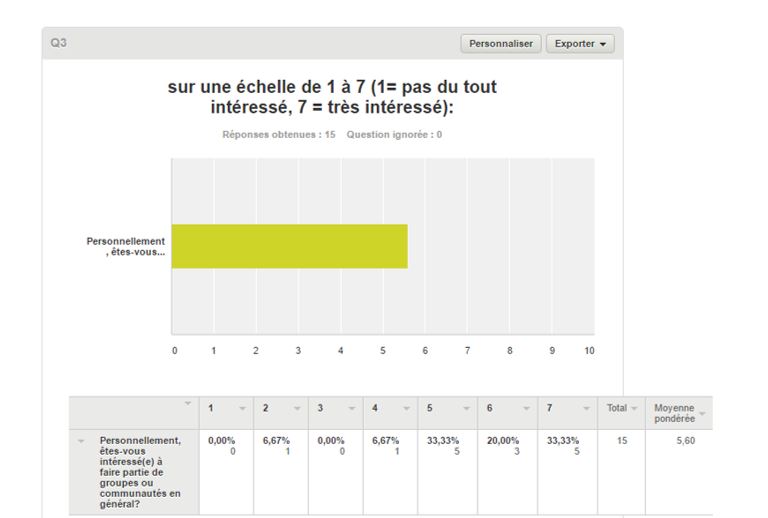
If you recall in my last post, a slim majority of respondents (12 vs 11) felt that groups or communities should be used to publish relevant content and not to spark conversation. Not encouraging for a community manager, but nevertheless, all respondents proved “moderately” to “very” interested in being part of such a tribe. But it’s hard to say otherwise if you’re an actual member …
What do you expect from your community?
Another interesting source of motivation can be found in the next question:
As a member of a community, what do you expect of it? You can choose more than one answer.
In the responses graphed below, sharing of expertise (in yellow) and networking (in orange) are 1 and 3 respectively. But as you know, it’s easy to make numbers speak for one or the other side of an arguement. Sharing expertise and information (Yellow and blue) can be one-way in the traditional sense: such as by content distribution through blogs. In short, I write a blog, I share it with the community and therefore, it disperses information. I’m an active broadcaster for many other passive members who are only there to consume information and use it as needed. Good old vertical, but not interactive, communication.
For the following question in the survey, we forced respondents to position themselves even more precisely on the more difficult subject of commitment. Here is the question
If the community was focused on the sharing of expertise and collaboration between members, would you be intresed in
Being part of it in an active way…(Yellow)
Being part of it in a passive way…(Blue)
Indifferent…(0%)
Not interested in being part of it…(0%)
I don’t know…(0%)
Define commitment
In fact, what is commitment in a community? Periodically publish content, “Like” certain things, consult published content regularly. This is what we find on many media and social networks, especially on socio-professional networks. Rather, is it not interacting with other members, posting comments, providing additional information, promoting the community, sharing good and bad experiences? To the above question, passive members are ahead of the active ones but to keep it in perspective, remember that there are 15 of them compared to 7 active members on a total of 314!
This is a far cry from the “standard” figures with regards to communities. When I was running ÉmergenceWeb, I had published this chart which I still use in my interactive communication courses at university. It’s still just as relevant and is also valid for B2B marketing:
The old 80-20 rule or, in this case, the opposite: 20% of active members compared to to 60% passive and 20% inactive. All human communities are alike and those on the web are no exception. The success of communities in your business depends on the quality of interactions amongst your active members and how you motivate and recognize them. They will attract passive members just as at night, a light attracts butterflies …
What about you? Are you active or passive in your virtual communities? Are you in the 20% that any community should target to ensure its success? They are the ones that attract the other 60%. So where do you stand? Where is your business at with its communities?




